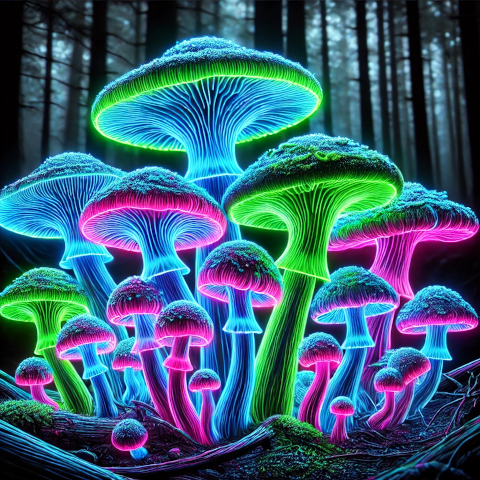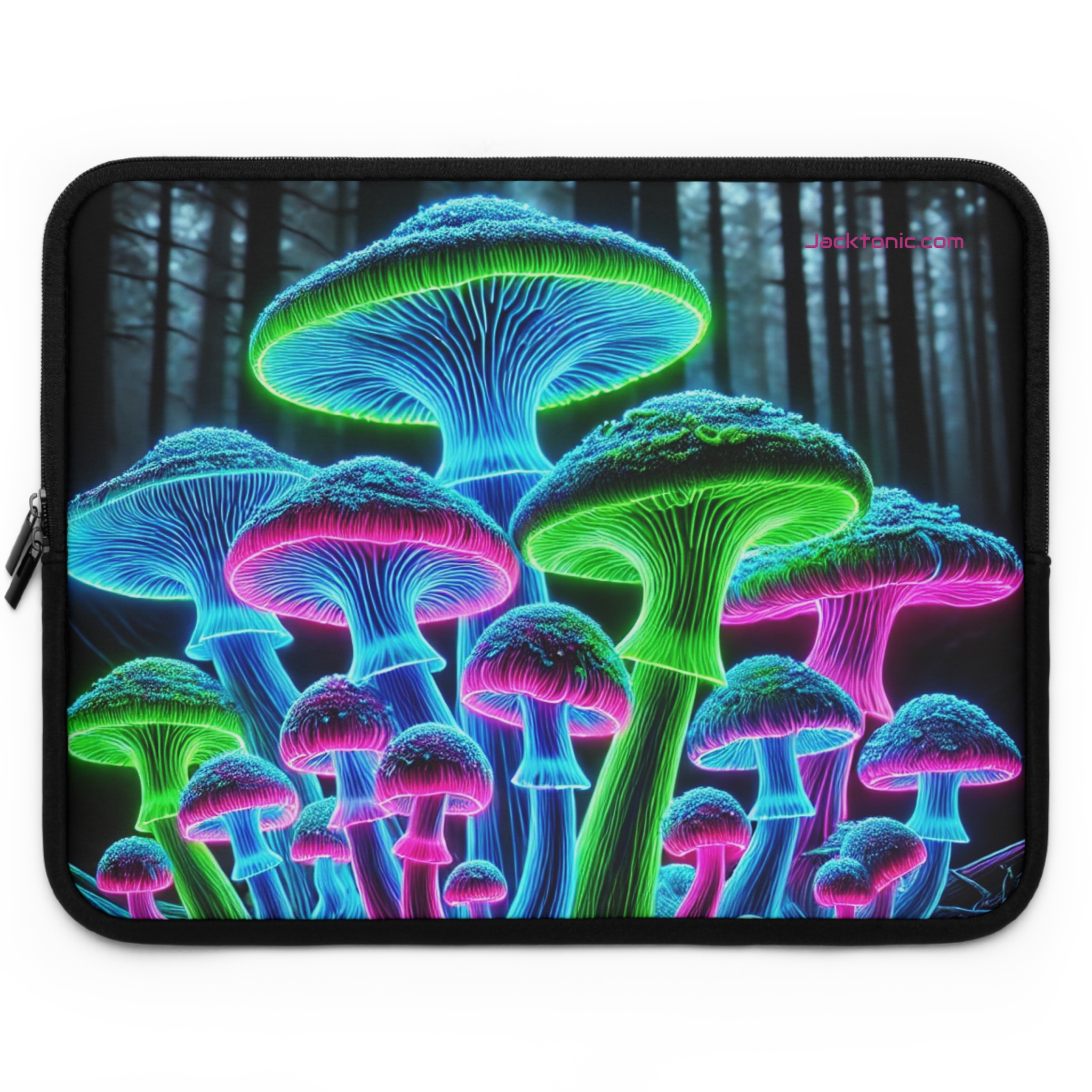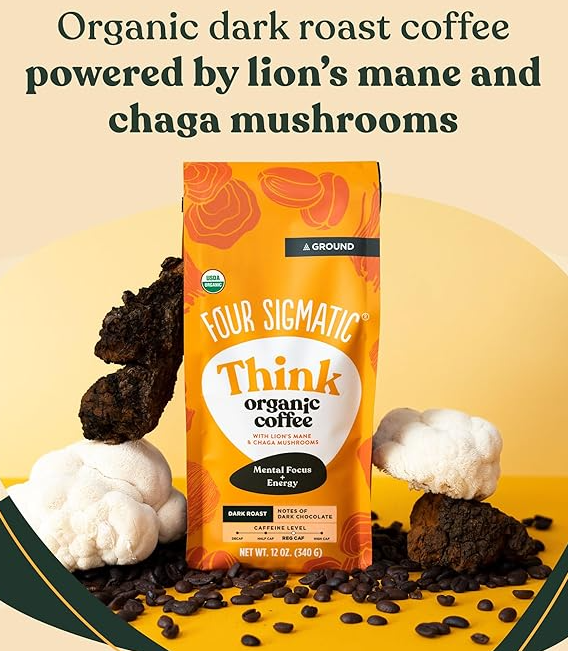Forest of the Death Cap

Deep in the heart of the forest, where the sunlight barely pierced through the dense canopy, a young mycologist named Lily was on a quest to document the rarest fungi. She had heard whispers about a particularly mysterious mushroom, the Amanita phalloides, also known as the Death Cap, rumored to have caused untold tragedies.
Armed with her notebook and camera, Lily ventured further into the woods than she ever had before. The air grew cooler, and the sound of chirping birds faded, replaced by an eerie silence. As she walked, she noticed patches of unusual mushrooms: their caps were smooth, with a pale greenish color, and they seemed to glow faintly in the dim light.
Lily approached one of the clusters, her curiosity piqued. She carefully took out her tools and began to document the specimen, oblivious to the danger it posed. The Death Cap mushroom contained a potent toxin called alpha-amanitin, which was lethal even in small doses. Once ingested, it caused severe liver and kidney damage, leading to a painful and often fatal demise.
As she worked, Lily felt a slight prick on her hand. She looked down to see a tiny cut, likely from a sharp twig. Thinking nothing of it, she continued her research. However, what Lily didn't realize was that even the spores of the Death Cap could cause harm if they entered an open wound.
Hours passed, and the forest seemed to grow darker, more oppressive. Lily decided it was time to head back. As she packed up her equipment, she felt an unusual dizziness. Her vision blurred, and she stumbled, catching herself on a nearby tree. Panic set in as she realized something was terribly wrong.
Staggering through the forest, Lily's thoughts raced. The symptoms matched those of alpha-amanitin poisoning: nausea, abdominal pain, and dizziness. She hadn't eaten anything in the forest, but the cut on her hand... Could the spores have entered her bloodstream?
Desperation fueled her steps, but the forest seemed endless. She remembered the stories she had heard about the Death Cap. In ancient times, it was believed to be the work of dark spirits, cursing those who disturbed their resting place. Modern science attributed its deadliness to the toxins, but the folklore added a chilling layer to her predicament.
Lily's strength waned, and she collapsed to the forest floor. Her mind drifted to the tales of those who never returned after encountering the Death Cap. Just as darkness closed in, she remembered the emergency beacon in her backpack—a last resort for dire situations.
With trembling hands, she activated the beacon. The signal was her final hope. She lay on the forest floor, the eerie glow of the Death Caps surrounding her, casting an ethereal light on her pale face.
Minutes felt like hours, but soon, a faint sound of rotors filled the air. A rescue helicopter, responding to her beacon, descended through the trees. Paramedics rushed to her side, swiftly assessing her condition. They administered activated charcoal to bind the toxins and started intravenous fluids to flush her system.
Lily was airlifted to the nearest hospital, where a team of doctors, well-versed in the dangers of alpha-amanitin, worked tirelessly to save her. She was given a liver-protective drug called silibinin, derived from milk thistle, which helped counteract the toxin.
After several days of intensive care, Lily began to recover. Her strength returned, and the fog of the poisoning lifted. The doctors commended her quick thinking and the effectiveness of the emergency beacon, which had undoubtedly saved her life.
Back at home, Lily reflected on her harrowing experience. She had gained a newfound respect for the power and danger of nature. Determined to use her knowledge for good, she started an awareness campaign about the dangers of wild mushrooms, particularly the Death Cap.
Her story spread, and her efforts led to increased funding for mycological research and public education. Lily became a respected voice in her field, her near-tragic encounter turning into a powerful lesson and a force for positive change.
And so, the legend of the Death Cap mushroom grew, not as a tale of doom, but as a story of survival and awareness. Lily's bravery and quick thinking became an inspiration, reminding everyone that knowledge and preparedness could turn even the darkest moments into stories of hope and triumph.
Transfer your laptop in the coolest way possible with our Neon Mushroom Glow Laptop Sleeve. Available in sizes from 7” to 17”.
 Check out our Neon Mushroom Glow Laptop Sleeve on Etsy!
Check out our Neon Mushroom Glow Laptop Sleeve on Etsy!
Top Ten Mushroom Jokes
-
Why did the mushroom go to the party alone?
Because he's a fungi!
-
What room can you never enter?
A mushroom!
-
Why do mushrooms always get invited to parties?
Because they're such fungis to be around!
-
What do you call a mushroom who buys everyone drinks?
A fungi to be with!
-
How much room should you give fungi to grow?
As mushroom as they need!
-
Why did the fungi leave the party?
There wasn't mushroom!
-
What do you call a mushroom who tells jokes?
A fun-guy!
-
What kind of music do mushrooms listen to?
Fungus rock!
-
Why was the mushroom invited to the party?
Because he was a fun-guy!
-
What does a mushroom say when it's had enough?
I'm really fed up with this spore behavior!
Fun Facts and Benefits of Mushrooms
Fun Facts
- Mushrooms are neither plants nor animals; they belong to a unique kingdom called Fungi.
- The largest living organism on Earth is a fungus. An Armillaria mushroom in Oregon covers over 2,385 acres and is more than 2,400 years old!
- There are over 10,000 known types of mushrooms, but only about 100 are edible and safe for humans.
- Mushrooms can produce vitamin D when exposed to sunlight, much like humans.
- The term "mushroom" actually refers to the fruiting body of a fungus. The majority of the organism is underground.
- Some mushrooms glow in the dark due to a natural phenomenon called bioluminescence.
- Portobello mushrooms are just mature cremini mushrooms. The only difference is their age!
- The fly agaric mushroom, with its distinctive red cap and white spots, is famous in fairy tales and folklore, but it is toxic if consumed.
- Truffles, a type of underground mushroom, are considered a delicacy and can be very expensive.
- Mushrooms have been used in traditional medicine for thousands of years, especially in Asian cultures.
Benefits
- Mushrooms are low in calories and fat, making them a healthy addition to any diet.
- They are a good source of protein, especially for vegetarians and vegans.
- Mushrooms contain antioxidants that help protect the body from harmful free radicals.
- They are rich in vitamins and minerals, including B vitamins, selenium, and potassium.
- Mushrooms have anti-inflammatory properties that can help reduce the risk of chronic diseases.
- They support immune health by enhancing the production of immune cells.
- Mushrooms contain fiber, which aids in digestion and promotes a healthy gut microbiome.
- Some mushrooms, like reishi and shiitake, have been shown to have anti-cancer properties in various studies.
- They can help lower cholesterol levels due to their beta-glucan content.
- Mushrooms can improve brain function and cognitive health thanks to their rich nutrient profile.
A Tribute to Mushrooms
In the forest, deep and green,
Where the sunlight’s seldom seen,
Sprout the mushrooms, shy and small,
Silent watchers over all.
Fungi in their hidden guise,
Magic under cloudy skies,
From the earth they rise and bloom,
Whispering secrets in the gloom.
Caps of brown and caps of white,
Glowing softly in the night,
Some are food and some are foe,
Some bring joy, and some bring woe.
Under trees where shadows play,
In the damp and cool they stay,
Nature’s marvels, ancient, wise,
Peering up with knowing eyes.
Teach us of your hidden lore,
Mysteries from days of yore,
In your silence, stories spun,
Of the moon, the stars, the sun.
Oh, dear mushrooms, humble, grand,
Sprouting from the forest land,
Guardians of earth’s deep song,
In your presence, we belong.
Four Sigmatic Think Mushroom Coffee | Organic Ground Coffee with Lion's Mane Mushroom and Chaga Mushroom | Nootropic Mushroom Coffee for Better Focus and Immune Support | 12oz Bag
 https://www.amazon.com/Four-Sigmatic-Mushroom-Ground-Coffee
https://www.amazon.com/Four-Sigmatic-Mushroom-Ground-Coffee